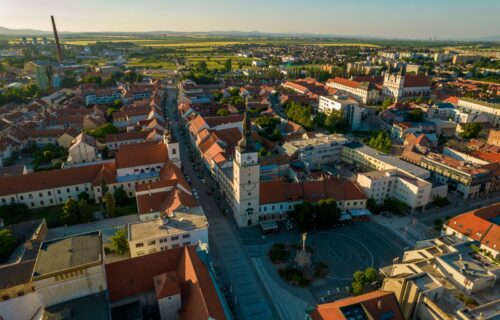Trnava, once a quiet regional centre best known for its baroque churches and university, is fast emerging as one of Slovakia’s most dynamic cities. With its strong local economy, active urban policy, and close proximity to Bratislava—just under 30 minutes by train—the city is now attracting families, investors, and developers seeking both quality of life and opportunity.
According to Karol Šebo, CEO of UNITED Real Estate, Trnava’s transformation reflects a wider shift in Slovakia’s urban landscape. “Trnava’s closeness to Bratislava is everything,” he said in an interview with CIJ.World. “When housing prices in the capital rise, people naturally look here. You can reach Bratislava faster from Trnava by train than from some of its own suburbs. The city offers strong infrastructure, jobs, and good services, but it’s still more affordable.”
Šebo noted that the connection between the two cities has reshaped local housing demand. “The situation in Bratislava directly affects us,” he said. “When there’s a shortage of apartments in the capital, Trnava’s prices go up because demand spills over. Approvals here are a bit faster, but the affordability gap is closing. Trnava is becoming Bratislava’s suburb, even though it’s a strong, independent city.”
The city’s leadership, under Mayor Peter Bročka, is responding proactively. In the past decade, Trnava has become a model of modern urban governance—expanding its cycling network, restoring green areas, and involving citizens in participatory budgeting. New development zones are being planned with a long-term goal of increasing the population to around 100,000.
“The mayor has a very clear strategy,” Šebo said. “The city is preparing new zones for residential growth that will go through design competitions before being offered to developers. It’s a smart way to guide expansion while keeping the city livable and affordable.”
Šebo pointed out that population growth is essential for Trnava’s continued success. “For years, people didn’t leave Trnava for jobs—they just moved to nearby villages,” he explained. “They still used the city’s infrastructure but paid taxes elsewhere. The city understands now that residents are its biggest asset. Keeping them within city limits helps sustain schools, public transport, and local services. It’s encouraging to see the population rising again after two decades of stagnation.”
Private developers, Šebo added, have an important role in ensuring this growth remains balanced. UNITED Real Estate’s flagship Cukrovar project—a large-scale redevelopment of a former sugar factory—combines new housing with cultural and office space, while preserving historic industrial buildings.
“Our goal is not just to build apartments,” Šebo said. “We want to create complete neighborhoods where people can live, work, and spend their free time. Cukrovar brings together heritage, modern design, and public space—it’s a project rooted in the city’s past but built for its future.”
Looking ahead, Šebo expects the city’s real estate market to remain strong. “Demand will stay high as long as Bratislava remains limited in new housing,” he said. “Competition among developers will increase, and that’s a good thing—it will push everyone to focus on quality and sustainability. Trnava has every chance to become one of Slovakia’s most desirable cities: urban in spirit, but still accessible and human in scale.”
Trnava’s ongoing transformation is part of a broader trend across Central Europe, where regional cities are absorbing economic and housing demand from national capitals. Over the last ten years, Trnava has led Slovakia in green infrastructure, bicycle mobility, and heritage-based regeneration—an approach that is now being reinforced through coordinated public and private investment.
Photos: Trnava Regional Tourism Board
© 2025 cij.world
